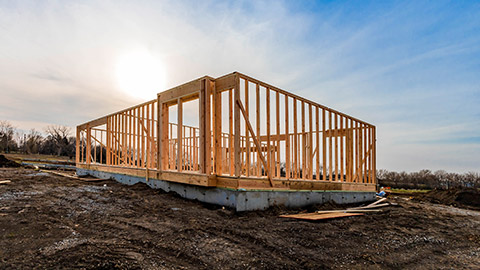In this topic, we will look at the legislative relationship between building contracts and insurance.
Our aim in this module is to:
- Differentiate the style of construction contracts commonly used in the industry.
- Recognise the approach and relationship of insurance coverage.
The main purpose of a contract is:
- to protect the builder and owner as they provide guidance on aspects that should be considered when entering a building project.
These build assumptions are made legally because homeowners generally have little to no knowledge of the processes involved in the construction.
Building information should be written down, as most disputes can be avoided due to the clear and comprehensive information in certain contracts.
All building projects should have a connected insurance cover regardless of size or construction cost. The builder and the owner should have an insurance cover in place as the risk of problems or something going wrong is relatively high.
These issues could include:
- theft of equipment or materials,
- general untold damage,
- fire or
- even natural disasters such as flooding during construction.
When building a new home or doing an alteration, extension or renovation, the builder and the homeowner's lender will require that Contract Works Insurance (also known as Builders Risk Insurance) be arranged to cover the work being carried out.
The New Zealand consumer.org website states that a building contract is an offer to carry out a task for a sum of money and an acceptance of that offer by the person for whom the task or activity is being done.
These stages include:
- the offer
- the acceptance
- and the consideration money payment.
(The legal term for this promise is "consideration").
This offer may be withdrawn at any time before acceptance.
Contracts within the building and construction industry can be more complex than, say, a simple shop purchase agreement.
Site attributes can sometimes be a bit offhand, and often, nothing is put down in writing, which, in the end, results in disputes as these are usually sparked by misunderstandings brought about by the failure to clarify the rights, obligations, and expectations of the parties involved.
As referenced from the BRANZ House Building Guide:
Although some construction contracts are, in fact, verbal, "A verbal contract is binding as soon as you accept an offer from a seller, or as soon as a seller accepts your offer."

When it comes to most building projects:
The main contractor: Has been contacted through the client and undertakes the construction part of the project.
This is when they subcontract those parts of work where they do not have the particular skills, expertise, or resources to do so.
The main contractor will then:
- manage these subcontractors
- order materials for a pre-agreed unit price or a lump sum contract
- ensure all work is carried out as specified to the agreed timeframes, quality, and extent within that contract.
However, there are other contract agreement options available, as referenced from BRANZ House Building guide 3rd addition, such as:
- Design and build contract. A contract where the contractor is responsible for the project design and construction.
- Separate contracts. A contract where the work is broken into particular trades or services.
- Labour-only contracts. A contract where the contractor only supplies labour, and the client undertakes to supply materials and coordinates the works.
- Management contracts. A contract where the contractor manages the project (orders materials and organises sub-contractors) and carries out the work, but the client pays for all the labour (including the time spent coordinating the project) and materials directly.
- Cost plus contract. A contract where the contractor is paid for labour and materials plus an agreed percentage or fee for profit or management. These types of contracts are most suitable where the extent and complexity of work cannot be assured accurately.
- Schedule contracts. A contract where the client has the approximate quantities of materials determined in advance, and the contractor supplies a rate to construct the particular item. The amount payable is then based on the actual quantities of materials used.
Construction Contracts Act 2002
The Construction Contracts Act was put in place to set out the procedures for making and paying claims for construction payments.
It sets out time limits for those payments to be made.
Generally, the Act protects contractors and subcontractors against unfair payment terms and practices; it bans using "pay when paid".
It provides a structure:
- for recovering money
- that is a quick, easy method for resolving payment disputes.
This Act will cover your project if it falls under the definition of 'Construction Work' in the Act. This definition includes construction and any work done on buildings and structures.
Review of Construction Contracts Act 2002
A review of the Construction Contracts Act 2002 began in 2010.
The amendments to the Act were:
- to make the existing adjudication process faster,
- more cost-effective,
- and more efficient in the resolution option for people with disputes under the old Construction Contract Act.
In general, this new Construction Contracts Amendment Act 2015 provided better protection for the retention of money.
More in-depth information on the Construction Contracts Act can be found on the government Building Performance website.
Understand why a written contract is important from a client's perspective.
Check your understanding of the video by answering the following five questions. Use the arrow button to progress.

Written contracts are designed to protect you and set out the requirements for both parties with their required obligations. It should help ensure all work is done according to the client's expectations and outline major key matters that are agreed on before any construction work begins.
Building.govt.nz states having a written contract is good for so many reasons, for example:
- Confirming the price of the build
- Setting out the roles of each contractor
- Confirming any subcontractors
- Setting out the start and finish dates of the work
- Planning the payment schedule
- Defining an acceptable quality of work
- Detailing the materials and products used for the build
- Confirming who pays for any council fees
- Understanding what to do if there are any defects
- Detailing simple procedures for any disputes
- Starting any ongoing maintenance work.
The Ministry of Business Innovation and Employment states that "a building contractor is required to provide the client with their checklist and other prescribed information under the Building Act 2004 before the client can sign a contract for the building work".
This prescribed checklist includes information about the essentials of the build in a written contract form.
The associated parts within contain information concerning:
- managing the building project
- hiring the contractors
- the various ways to protect the client or owner.
Once completed by the main contractor, it is officially given to the client, either printed off and handed or e-mailed.
Another way to develop contract conditions is by using a standard form contract.
- Under a standard form contract, the parties use pre-printed agreements or conditions rather than negotiate their terms.
- Using a standard form contract is not legally obligated, but it may be cheaper and more convenient.
Standards New Zealand sells various standard forms of building contracts.
For example:
NZS 3917:2013 - Intended for use when contracts are made for maintenance or other building or engineering works where the contract is intended to run for a defined period.
Or there are contacts for the clients or owners themselves to use.
For example:
- NZS 3902:2004 'Housing, alterations and small buildings contract'
- This standard format aims to be a fair and easily understood contract for the owners or clients when making their own building arrangements.
- As well as accessing the government standard website for advice and a standard form contract, you can also receive them from various construction industry associations.
- These associations may also produce their own standard form of contracts for their registered members, to which they would offer guidance and advice on the various contractual matters.
Examples of these associations, all of which produce standard form contracts for their members, would be:
- The Registered Master Builders Federation
- Build Safe NZ
- New Zealand Certified Builders (NZCB)
Read more about the types of New Zealand Standard contacts available based on construction.
The following NZ standard contract, NZS 3902:2004, "Housing, alterations and small building contract", has been published for owners or clients to make their own form of contract.
Download the free PDF version and read through pages 9-13 to be aware of the terminologies used and the practices involved in this style of contract. In addition, it is also good to be aware of the general obligations of the parties involved.
A building contract with details of its conditions should also accompany a disclosure statement; this document should specify the types and the amount of insurance coverage required or to be carried out to cover any potentially unforeseen circumstances that might occur.
It is always good practice and recommended to take out insurance cover for any building work to protect the builder and the building owner (client) against any loss resulting from any damage during or from the construction project itself.
The three different types of insurance cover that can be taken out are:
- Contracts Works Insurance
- Public Liability Insurance
- Professional Indemnity Insurance.
Contract Works Insurance
Contract Works Insurance protects against:
- damage to construction work material,
- loss from theft,
- vandalism or arson,
- any damage resulting from natural disasters.
It also generally covers subcontractors if they cause damage to the building works as well.
Contract Works Insurance is also known as Construction Insurance, Builders All Risk or Contractors All Risk Insurance.
Public Liability Insurance
Every contractor should have Public Liability Insurance, also called General Liability Insurance.
This type of insurance:
- Provides protection against unexpected events that occur during the course of running a business.
- Covers personal injury to others that ACC may not cover.
Professional Indemnity Insurance
Professional Indemnity Insurance:
- It is for workers or people providing a service or advice.
- Protects against financial loss or any legal action where another party alleges a mistake.
BRANZ House Building guide mentions various organisations that provide insurance coverage in New Zealand.
Each has its own policies, so research which is best for you and your project.
Specific insurance cover can also cover for things such as:
- Accidental damage during construction (builders' all-risk policy).
- Any accidental damage to existing building during alterations of existing household policy insurance.
- Accidental damage to adjoining property (public liability).
- Injury to other persons (public liability).
Contract Works or All Risk Insurance:
- Does not generally include damage or theft to the contractor's equipment.
- This should be covered by the contractor's insurance policy for loss or damage to tools and other assets.
- When in doubt about what is covered, talk to your insurance provider.
Who is responsible for insurance?
In a nutshell, taken from Built-in Insurance NZ, "If you have a full contract and it's for a new build – usually the builder will arrange it. This is because a normal full-build contract for a new home will specify that it's the builder's responsibility. The policy will still cover both parties, but the builder puts it in place".
Read more information on the Master Builders Guarantee and the NZ Certified Builders Guarantee.
The main purpose of the contract and the various insurance policies available are to:
- protect the builder and the owner while providing guidance on aspects of the build that need to be considered before entering into the proposed project.
